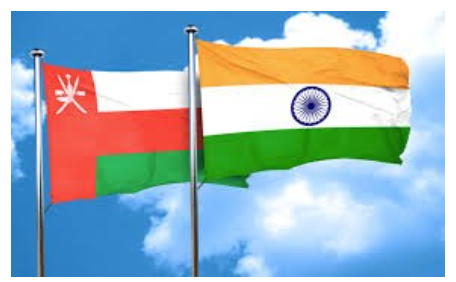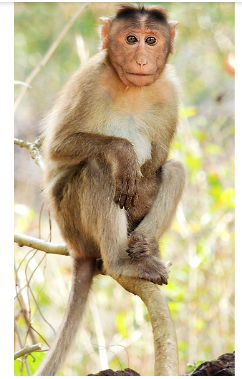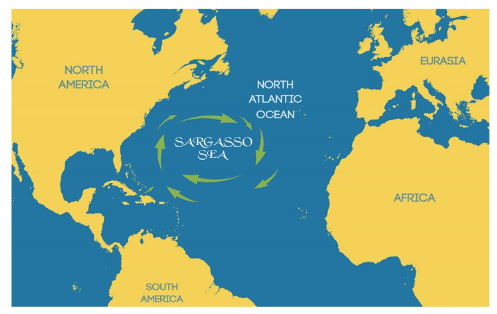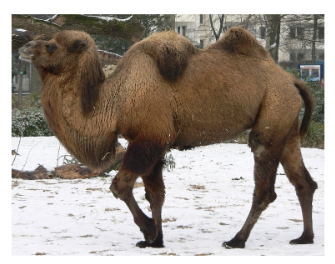Tuesday, 19th December 2023
Logistics Ease Across Different States (LEADS) 2023 Report
In News: 11 States and 2 UTs Achieve Recognition in LEADS 2023 Report by Ministry of Commerce and Industry

Logistics Landscape in India: Transformative Measures and Future Outlook
Understanding Logistics in India
- Logistics involves the efficient planning and execution of goods transportation and storage from origin to consumption, aiming to meet customer requirements in a timely and cost-effective manner.
- The Indian logistics market is valued at over USD 200 billion and supports over 22 million jobs.
Call for a Comprehensive Logistics Policy
- Recognizing the high logistics costs compared to developed economies, there is a pressing need for a national logistics policy in India.
- Reducing these costs is crucial for enhancing competitiveness in both domestic and export markets, fostering efficiency, value addition, and enterprise.
Government Initiatives to Enhance Logistics
- National Logistics Policy (NLP)
- Launched in September 2022, the NLP aims to facilitate seamless goods flow across India, fostering an integrated logistics ecosystem, reducing time and costs, and ensuring sustainability.
- PM GATI Shakti Master Plan (2021)
- Introduced to integrate 16 ministries, including Railways and Roadways, through a digital platform for coordinated infrastructure connectivity projects.
- Multi-Modal Logistics Parks under Bharat Mala Pariyojana
- Approval for the development of 35 new parks to reduce logistics costs and enhance connectivity.
- Air Cargo Terminals and Cold-Storage Facilities
- Construction of 40 air cargo terminals and provision of cold-storage facilities at 30 airports to promote exports.
Logistics Ease Across Different States (LEADS)
- Conceived in 2018 by DPIIT, MoC&I, LEADS is modelled after the Logistics Performance Index of the World Bank.
- Unlike the LPI, LEADS combines perception and objectivity, offering comprehensive insights into State/UT logistics performance.
- The LEADS 2023 report reveals positive shifts in States' performance, empowering decision-makers with region-specific data.
Significance of the LEADS Initiative
- The LEADS report fosters healthy competition among States/UTs, encouraging logistics performance enhancement.
- With 23 States/UTs aligning their policies with the NLP and 16 granting industry status to logistics, the initiative enhances overall competitiveness and global positioning.
- India's improved Logistics Performance Index rank (38th in 2023) reflects the positive impact of digital reforms.
Future Prospects and the China-Plus-One Strategy
- India's logistics sector is pivotal in achieving tenfold growth to $35 trillion by 2047, aligning with the China-Plus-One strategy.
- This global business approach diversifies investments beyond China, and India's logistics advancements position it strategically in the evolving global supply chain landscape.
Source: TH
India-Oman Bilateral Meet - Edukemy Current Affairs
In News: India and Oman have recently agreed on the India-Oman Joint Vision Partnership, outlining collaborative pathways for the future.

Key Highlights of Bilateral Meeting: Nurturing India-Oman Collaboration
- Bilateral Agreements
- Both nations have inked pacts on information technology, financial crime combat, culture, and the establishment of a Hindi chair by the Indian Council of Cultural Relations (ICCR) in Oman.
- Comprehensive Economic Partnership Agreement (CEPA)
- Discussions are underway to finalize a CEPA, with substantial progress made.
- Leaders emphasize concluding this agreement promptly to bolster economic ties.
- Oman-India Investment Fund
- Announcement of the third tranche of the Oman-India investment fund, valued at USD 300 million, to be invested in high-growth sectors of the Indian economy.
- The fund, a joint venture between SBI and the Oman Investment Authority, signifies deepening economic collaboration.
- Digital Payments and Trade
- Exploration of using India's UPI (Unified Payments Interface) in collaboration with an Omani platform.
- The prospect of conducting trade in Rupees is also under consideration, though it remains in the exploratory stage.
- Regional and International Issues
- Leaders exchanged views on global matters, including the Hamas-Israel conflict.
- They addressed the challenge of terrorism and advocated for a two-state solution to the Palestine issue.
India-Oman Relations: A Historical Perspective
- Background
- Historically linked by geography, trade, and culture, India and Oman enjoy warm relations.
- Oman is a strategic partner for India in the Gulf, engaging in key regional and international forums.
- Defence Relations
- The Joint Military Cooperation Committee (JMCC) serves as the highest defence engagement.
- Despite intermittent meetings, joint military exercises—Al Najah, Eastern Bridge, and Naseem Al Bahr—underscore strong defence ties.
- Economic & Commercial Relations
- Institutional mechanisms like Joint Commission Meetings (JCM) and Joint Business Council (JBC) facilitate economic cooperation.
- India ranks high in Oman's trade partners, particularly in crude oil exports.
- Indian Community in Oman
- Approximately 6.2 lakh Indians reside in Oman, with a significant presence for over 150-200 years, contributing to the socio-economic fabric.
Oman’s Strategic Significance for India
- Gateway to Strait of Hormuz
- Oman, positioned at the Strait of Hormuz, holds strategic importance for India, accounting for a substantial portion of its oil imports.
- Defence Cooperation
- A key pillar of the strategic partnership, defence exchanges and joint exercises foster cooperation and trust.
- Oman actively participates in the Indian Ocean Naval Symposium (IONS).
- Access to Port of Duqm
- India secures access to the Port of Duqm in Oman for military and logistical support, reinforcing its maritime strategy in the Indian Ocean to counter regional influences.
Way Forward
As India seeks long-term energy partnerships, engaging with Oman and leveraging opportunities at the Duqm Port industrial city is crucial. Strengthening strategic ties in the Western and Southern Indian Ocean aligns with India's Indo-Pacific vision.
|
UPSC Previous Year Questions Prelims (2016) Q. Which of the following is not a member of ‘Gulf Cooperation Council’? (a) Iran Ans: (a) Exp:
Mains (2018) Q. A number of outside powers have entrenched themselves in Central Asia, which is a zone of interest to India. Discuss the implications, in this context, of India’s joining the Ashgabat Agreement, 2018. Mains (2017) Q. The question of India’s Energy Security constitutes the most important part of India’s economic progress. Analyse India’s energy policy cooperation with West Asian countries. |
Source: IE
Surat Diamond Bourse - Edukemy Current Affairs
In News: The inauguration of the Surat Diamond Bourse (SDB) in Gujarat by the Indian Prime Minister signifies a major milestone in the diamond and jewellery industry.Status of the Diamond Industry in India: Navigating Gemstone Brilliance

- Definition and Origin
- A diamond, a naturally occurring mineral composed of pure carbon, derives its name from the Greek word "Adamas," signifying indestructibility.
- Forming in igneous rocks and alluvial deposits, diamonds are found in various parts of the world.
- Major Producing Countries
- Primary diamond-producing nations include Russia, Botswana, Canada, South Africa, and the Democratic Republic of the Congo, with Russia leading the global production in 2022.
Diamond Industry in India: Sparkling Global Dominance
- India, as the world's premier cutting and polishing centre for diamonds, boasts over 90% of global polished diamond manufacturing.
- The diamond fields in India are categorized into four regions, including Madhya Pradesh, Andhra Pradesh, Chhattisgarh, and Odisha.
- As of 2022, India proudly holds the top position among the leading exporters of cut and polished diamonds.
Lab-Grown Diamonds: A Sustainable Sparkle
- About Lab-Grown Diamonds
- Lab-grown diamonds (LGDs) are diamonds cultivated in laboratories, often referred to as cultured, synthetic, or man-made diamonds.
- With identical chemical, optical, and physical properties to natural diamonds, LGDs avoid the social and environmental impacts associated with traditional mining.
- Production Methods
- LGDs are synthesized using two primary methods: chemical vapor deposition (CVD) and high pressure, high temperature (HPHT), both starting with a seed, a slice of another diamond.
- Market Share in India
- While India excels as a diamond cutting and polishing hub, the market share of lab-grown diamonds in the overall industry remains at 2-3%.
- To boost this share, the Union Finance Minister, in the 2023-24 Budget, announced the elimination of customs duty on imported seeds used in manufacturing rough LGDs, reflecting a strategic move to enhance competitiveness.
Source: TH
Yak Domestication: A 2,500-Year Journey
In News: In a recent investigation, the earliest signs of human yak domestication were revealed in Bangga, China.

Major Study Findings: Unveiling Ancient Yak Domestication Practices
- Coexistence of Domesticated Yaks and Taurine Cattle
- Exploring the intricate world of animal husbandry in Bangga, the study illuminates the cohabitation of domesticated yaks and taurine cattle, showcasing advanced agricultural practices dating back 2,500 years.
- Unexpected Presence of Taurine Cattle
- Researchers express astonishment at the proximity of taurine cattle to the Indian subcontinent, traditionally dominated by Zebus.
- The study suggests that taurine cattle likely traversed from Anatolia (modern-day Turkey) through the Silk Route to central and eastern Tibet.
- Hybridization and Advanced Breeding Practices
- Unearthing compelling evidence of intentional crossbreeding between yaks and cattle, the research underscores the sophisticated understanding ancient inhabitants possessed in the realm of animal breeding, revealing a legacy of intentional hybridization.
Wild Yaks: Navigating the High-Elevation Plateau
- Overview
- Thriving in the remote landscapes of the Tibetan plateau, the wild yak (Bos grannies or Bos mutus) makes its home in high-elevation alpine tundra, grasslands, and cold deserts.
- Distribution and Conservation Challenges
- Once found in Bhutan and Nepal, the native wild yak population is now presumed extinct in those regions, limiting their current habitat to China and India.
- The Convention on Migratory Species (CMS) highlights threats including habitat loss, genetic hybridization, and poaching.
- Human-Induced Challenges
- Communities in the Himalayas and Tibetan Plateau utilize Dzo (Male hybrid) and Dzomo (Female hybrid), exacerbating genetic hybridization.
- Human activities and livestock disturbances prompt wild yaks to relocate, impacting their populations negatively.
- Conservation Status
- Acknowledging the vulnerability of wild yaks, the IUCN Red List categorizes them as "Vulnerable," while CITES designates them under Appendix I.
- The Wildlife (Protection) Amendment Act 2022 in India further reinforces protective measures, classifying wild yaks under Schedule I.
Source: DTE
Bonnet Macaque Monkey - Edukemy Current Affairs
In News: The discovery of 27 bonnet macaque monkey carcasses in a Karnataka village highlights the escalating conflict between humans and monkeys.

About Bonnet Macaque Monkey
- Occurrences of monkeys invading human territories in search of food have resulted in distressing incidents, such as the suspected poisoning of macaques in Guthigaru village.
- The encroachment of agriculture into the fringes of forests, particularly in coconut plantations and fruit orchards, attracts monkeys when their natural food sources become scarce.
- The bonnet macaque (Macaca radiata) is an Old-World monkey species characterized by its Gray-brown colour, large ears, wrinkled faces, and a distinctive mop of hair on their heads parted in the middle.
- Named for the whorls of hair on the crown that resemble a cap or bonnet, these macaques are endemic commensals, exclusively found in peninsular India and often living in close proximity to human populations.
- IUCN Status: Vulnerable
Source: DTE
Sargasso Sea - Edukemy Current Affairs
In News: The Sargasso Sea near Bermuda is experiencing unprecedented warmth, higher salinity, and increased acidity since measurements started in 1954.

Sargasso Sea Overview
- The Sargasso Sea, situated entirely within the Atlantic Ocean, is the sole sea lacking a land boundary. Named after Sargassum, a holopelagic golden drift algae, it forms extensive floating mats on the ocean surface.
- This unique open-ocean ecosystem is enclosed by currents circulating around the North Atlantic sub-tropical gyre, serving as the central hub for continuously pelagic drift algae.
Ecosystem and Boundaries
- The Sargasso Sea provides vital habitats, spawning areas, migration pathways, and feeding grounds for a diverse array of flora and fauna, including endemic, endangered, and commercially important species.
- Bounded by the Gulf Stream to the west, North Atlantic Current to the north, Canary Current to the east, and North Atlantic Equatorial Current to the south, it stands as a critical marine environment.
Gulf Stream Key Facts
- The Gulf Stream, a swift and warm ocean current, flows along North America's eastern coast and crosses the Atlantic Ocean toward Europe.
- Originating in the Gulf of Mexico, it results from the convergence of warm waters from the Caribbean Sea and the Gulf of Mexico.
- This current follows a north-eastward path, carrying tropical warmth to higher latitudes.
- With significant width and variable speeds, the Gulf Stream plays a pivotal role in oceanic circulation.
Source: LS
Guru Teg Bahadur - Edukemy Current Affairs
In News: The Prime Minister of India recently honoured Sri Guru Teg Bahadur on the anniversary of his martyrdom.

Guru Teg Bahadur: An Overview
- Early Life
- Guru Teg Bahadur, originally named Teyag Mal, was the ninth Guru of the Sikh religion.
- His father, Guru Hargobind Sahib, changed his name to Teg Bahadur, reflecting his prowess in battle and sword skills.
- Contributions and Achievements
- Guru Teg Bahadur played a pivotal role in Sikh history, contributing over 100 poetic hymns to the Granth Sahib, covering diverse topics.
- He is credited with building the city of Anandpur Sahib, a significant place where the last two Sikh Gurus resided and where Guru Gobind Singh founded the Khalsa Panth in 1699.
- Notably, he facilitated reconciliation between Raja Bishan Singh and Raja Paranpal, averting a potential war.
- Arrest and Martyrdom
- In 1665, Guru Teg Bahadur was first arrested by the Mughals on the orders of Aurangzeb.
- His public beheading took place in 1675 in Delhi on the orders of Emperor Aurangzeb.
- His martyrdom is commemorated annually on 24 November as the Shaheedi Divas of Guru Tegh Bahadur.
- Adi Granth: The Sacred Scripture
- The Adi Granth, the sacred scripture of Sikhism, is a compilation of nearly 6,000 hymns from Sikh Gurus.
- It holds a central place of worship in gurdwaras, receiving reverence akin to a living Guru.
Source: IE
Hydrogen cyanide - Edukemy Current Affairs
In News: Hydrogen cyanide, a crucial molecule for life's formation, has been discovered in the oceans of Saturn's icy moon Enceladus.

Hydrogen Cyanide Overview
Hydrogen cyanide, also known as hydrocyanic acid or HCN, is a colourless or pale-blue liquid or gas with an almond-like Odor. Despite being an excellent solvent for various salts, its toxicity limits its widespread use as a solvent.
Characteristics and Applications
- Hydrogen cyanide poses health risks as it interferes with the body's use of oxygen, potentially harming the brain, heart, blood vessels, and lungs.
- While it finds application in fumigation, electroplating, mining, and chemical synthesis, its use is restricted due to safety concerns.
- Industries employing hydrogen cyanide include synthetic fibres, plastics, dyes, and pesticides.
Insights from Cassini Spacecraft
- The Cassini spacecraft, launched by NASA in 1997, conducted an extensive mission orbiting Saturn from 2004 to 2017.
- It provided valuable data on Saturn's atmosphere, rings, and moons, discovering new moons and identifying Enceladus and Titan as intriguing sites for potential extraterrestrial life.
Source: TP
Camelids - Edukemy Current Affairs
In News: The International Year of Camelids was officially designated by the United Nations for the year 2024.

Camelids Overview
- Camelids, members of the family Camelidae, encompass a diverse group of even-toed ungulates celebrated for their unique adaptations to arid and high-altitude environments.
- Notable examples include camels, llamas, alpacas, guanacos, and vicuñas.
Classification
- Camelids are broadly categorized into two groups: Old World and New World.
- Old World Camelids-found in northern Africa and central Asia, include the distinctive dromedary and Bactrian camels known for their humps and the male-specific dull, associated with dominance displays.
- New World Camelids-South American Camelids, or New World Camelids, feature llamas, alpacas, guanacos, and vicuñas. Notably, vicuñas inhabit the high-altitude Andes Mountains.
Distinctive Features
- Even-toed ungulates with soft-padded, two-toed feet resembling snowshoes.
- Long necks, slender legs, and split upper lips with mobile protrusions.
- Herbivores with a unique digestive system for extracting nutrients from fibrous plants.
- Ruminants with true canine teeth and three-chambered stomachs, distinguishing them from other ruminants.
- Recognizable for their herding behaviour.
- Camelids showcase an intriguing blend of adaptation and diversity within the animal kingdom.
Source: HT
Noma disease - Edukemy Current Affairs
In News: The World Health Organization (WHO) recently added Noma (cancrum oris or gangrenous stomatitis) to its official list of neglected tropical diseases (NTDs).

About Noma disease
- Noma disease, also known as cancrum oris or gangrenous stomatitis, is a rapidly progressing severe gangrenous condition affecting the mouth and face.
- Primarily found in sub-Saharan Africa, it commonly afflicts malnourished children aged 2–6 years facing conditions such as infectious diseases, extreme poverty, poor oral health, or weakened immune systems.
- While starting as a gum sore, it swiftly evolves into acute necrotizing gingivitis, affecting both soft and hard tissues of the face.
- Although prevalent in sub-Saharan Africa, cases have been reported in other regions globally.
- Noma is considered an opportunistic and non-contagious disease, with evidence pointing to non-specific polymicrobial organisms as causative agents.
- Early detection is crucial for effective treatment, involving antibiotics, oral hygiene improvement, mouthwash, and nutritional supplements.
Source: WHO
Balancing Forest Rights Act: Justice, Conservation, Challenges
In News: Recently an article discusses the obstacles and deficiencies encountered in the execution of the Forest Rights Act within the context of India.
Understanding Forest Rights Act, 2006: A Comprehensive Overview
The Forest Rights Act, 2006, acknowledges and vests forest rights and occupation in Forest Dwelling Scheduled Tribes (FDST) and Other Traditional Forest Dwellers (OTFD) who have generational ties to such forests. It addresses the conservation of forests while safeguarding the livelihood and food security of FDST and OTFD.
Key Provisions of the Act: Unravelling Rights and Responsibilities
- Recognition Criteria
- The Act allows recognition of forest rights for those residing in forest land for at least three generations before December 13, 2005, meeting bona fide livelihood needs.
- Types of Rights Recognized
- It identifies four types of rights—Title rights, use rights, Relief and development rights, and Forest management rights, aiming to balance ownership, utilization, rehabilitation, and conservation.
- Gram Sabha's Role
- The Gram Sabha plays a crucial role in initiating the process of determining Individual Forest Rights (IFR) or Community Forest Rights (CFR) for FDST and OTFD.
The Genesis of Forest Rights Act: Unravelling Historical Injustices
- Pre-Colonial Era
- Local communities traditionally held rights over forests in their regions, even when rulers claimed specific hunting rights.
- Shifting cultivation was practiced, and communities had access to forest benefits.
- Colonial Era Injustices
- The introduction of the Indian Forest Act in 1878 marked a shift in forest policies, favouring timber extraction.
- Colonial injustices included bans on shifting cultivation, creation of 'Forest Villages,' limited access to forest produce, and forceful displacements.
- Post-Independence Era Challenges
- Post-Independence, forest areas were declared state property, displacing communities labelled as 'encroachers.'
- Wildlife and Forest Acts further led to forceful relocations, undermining local opinions and compensation for development impacts.
Role of Forest Rights Act, 2006: Addressing Historical Injustices
- Individual Forest Rights (IFRs)
- The Act acknowledges 'encroachments' as legitimate habitation and cultivation, granting IFRs to continue these activities.
- Community Forest Rights (CFRs)
- Recognition of village communities' rights to access, use, and manage forests within customary boundaries, challenging the historical dominance of the forest bureaucracy.
- Decentralized Forest Governance
- The Act establishes democratic procedures for balancing wildlife conservation and community rights, ensuring a say in forest management.
Implementation Challenges and Concerns: Navigating Roadblocks
- Individual Rights vs. Community Rights: Divergent Focus in Implementation
- Politically Skewed Focus
- Some states prioritize individual rights, neglecting the vital recognition and protection of community rights essential for sustainable forest management.
- Politically Skewed Focus
- Digital Processes in Areas with Poor Connectivity: Technological Hurdles
- Challenges in Implementation
- Digital processes face challenges in areas with poor connectivity and low literacy rates, hindering effective filing and processing of claims.
- Challenges in Implementation
- Incomplete Recognition of Community Forest Rights (CFRs): A Significant Gap
- Slow Progress in CFR Recognition
- The incomplete recognition of community rights poses a significant gap in FRA implementation, with resistance from the forest bureaucracy hindering empowerment.
- Slow Progress in CFR Recognition
- Forest Villages Not Addressed: Inadequate Solutions
- Neglected 'Forest Villages'
- The issue of 'forest villages' lacks comprehensive solutions in most states, indicating incomplete implementation efforts.
- Neglected 'Forest Villages'
Strategies for Moving Forward: Charting a Progressive Path
- Empowerment of Gram Sabha
- Actively involve the Gram Sabha in decision-making processes related to forest management, ensuring local self-governance participation.
- Inclusive Decision-Making
- Include rights holders in decision-making processes to consider their perspectives and needs, fostering inclusivity.
- Education and Training
- Conduct awareness programs and training sessions for forest dwellers to inform them about their rights under the FRA.
- Capacity Building
- Strengthen the capacity of civil society organizations to support and advocate for the rights of forest dwellers.
- Monitoring Mechanisms
- Establish monitoring systems to ensure adherence to the provisions and objectives of the FRA by relevant authorities.
- Accountability Measures
- Implement accountability measures for violations or non-compliance with the FRA, holding responsible authorities accountable.
- Integrated Planning
- Develop integrated plans considering both development and conservation needs, respecting the rights and interests of forest dwellers.
- Consultative Processes
- Engage in consultative processes involving all stakeholders to strike a balance between development and conservation goals.
Conclusion: Navigating Challenges for a Sustainable Future
Despite some states making progress, comprehensive understanding and endorsement of the FRA's essence are crucial. Without this, past injustices persist, forest governance lacks democracy, and community-led conservation and sustainable livelihoods remain unrealized.
|
UPSC Previous Year Questions Prelims (2021) Q. Consider the following statements:
Which of the statements given above are correct? (a) 1, 2, 4 and 5 Ans: (b) Q. At the national level, which ministry is the nodal agency to ensure effective implementation of the Scheduled Tribes and Other Traditional Forest Dwellers (Recognition of Forest Rights) Act, 2006? (a) Ministry of Environment, Forest and Climate Change Ans: (d) |
Source: TH
Share the article
Edukemy’s Current Affairs Quiz is published with multiple choice questions for UPSC exams
MCQ
Get Latest Updates on Offers, Event dates, and free Mentorship sessions.

Get in touch with our Expert Academic Counsellors 👋
FAQs
UPSC Daily Current Affairs focuses on learning current events on a daily basis. An aspirant needs to study regular and updated information about current events, news, and relevant topics that are important for UPSC aspirants. It covers national and international affairs, government policies, socio-economic issues, science and technology advancements, and more.
UPSC Daily Current Affairs provides aspirants with a concise and comprehensive overview of the latest happenings and developments across various fields. It helps aspirants stay updated with current affairs and provides them with valuable insights and analysis, which are essential for answering questions in the UPSC examinations. It enhances their knowledge, analytical skills, and ability to connect current affairs with the UPSC syllabus.
UPSC Daily Current Affairs covers a wide range of topics, including politics, economics, science and technology, environment, social issues, governance, international relations, and more. It offers news summaries, in-depth analyses, editorials, opinion pieces, and relevant study materials. It also provides practice questions and quizzes to help aspirants test their understanding of current affairs.
Edukemy's UPSC Daily Current Affairs can be accessed through:
- UPSC Daily Current Affairs can be accessed through Current Affairs tab at the top of the Main Page of Edukemy.
- Edukemy Mobile app: The Daily Current Affairs can also be access through Edukemy Mobile App.
- Social media: Follow Edukemy’s official social media accounts or pages that provide UPSC Daily Current Affairs updates, including Facebook, Twitter, or Telegram channels.





